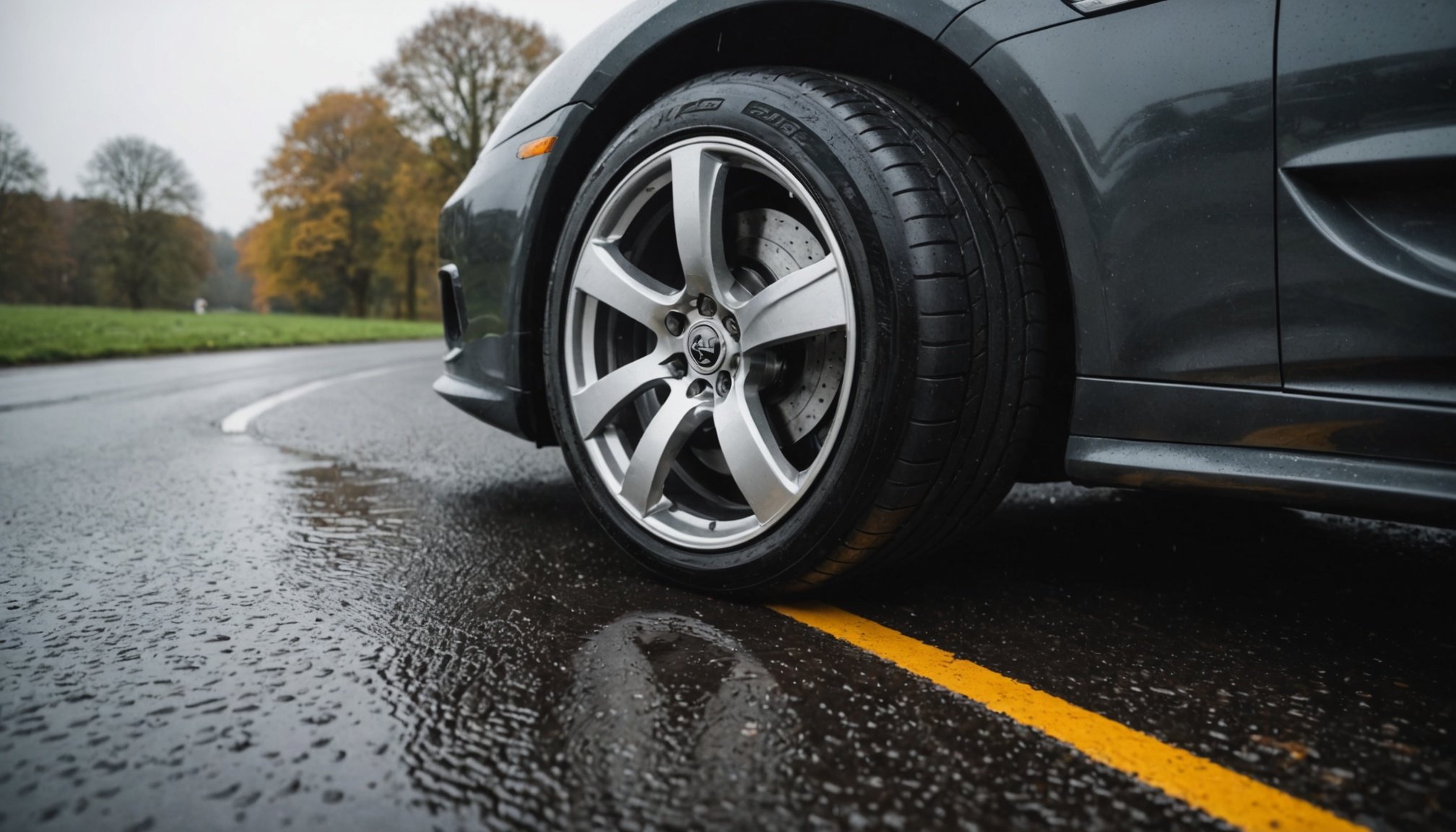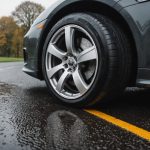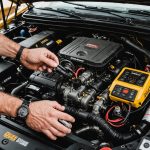Importance of Proper Tire Pressure
Proper tire pressure is crucial for the performance and safety of sports cars. Ensuring tires are inflated to the recommended pressure can significantly affect a vehicle’s handling. When tires are under-inflated, the car’s grip on the road surface diminishes, leading to decreased responsiveness during cornering or emergency maneuvers. Similarly, over-inflation can make the tires stiffer, reducing contact with the road, which affects the car’s traction and increases the risk of skidding or losing control.
Maintaining the optimal tire pressure also enhances safety. Properly inflated tires can help prevent blowouts, which can be particularly dangerous at the high speeds sports cars are designed to achieve. Another benefit of maintaining the correct tire pressure is improved fuel efficiency. Tires with the right inflation levels reduce rolling resistance, which in turn means the engine doesn’t work as hard, conserving fuel over time.
Also to discover : Ultimate handbook: a secure, step-by-step method to jump-start your diesel engine vehicle
Different sports car models have specific optimal tire pressure ranges. It’s essential to consult the vehicle manufacturer’s manual or the tire information label, usually found on the driver’s door edge, to find the correct pressure range for your specific model. Understanding and maintaining this key aspect of your sports car can not only improve overall performance but also ensure enhanced driving safety.
Effects of Rainy Conditions on Tire Performance
Rainy conditions demand enhanced tire performance, especially for sports cars. Wet roads significantly alter how tires interact with the surface, increasing the risk of hydroplaning. Hydroplaning occurs when water builds up beneath the tire, causing a loss of contact with the road. How does tire pressure influence this? Properly inflated tires maintain better traction by dispersing water efficiently, whereas under-inflated ones fail to push water aside, increasing slip risk.
Topic to read : Ultimate handbook: key strategies for maintaining your vehicle”s turbocharger system effectively
The difference between dry and wet conditions is stark. In dry weather, tire grip is optimal, supporting high-speed maneuvers common in sports cars. In contrast, wet conditions necessitate adjustments to tire performance. Tread design plays a critical role here; deep, wide grooves are essential in directing water away, reducing hydroplaning chances. Sports car enthusiasts must understand these dynamics to ensure safety and preferred performance levels.
Selecting tires with an appropriate tread pattern for wet conditions complements maintaining optimal tire pressure. Such actions can significantly enhance a sports car’s stability and handling on wet roads, ensuring a safer driving experience regardless of weather conditions.
Recommended Tire Pressure Practices for Sports Cars
Setting the right tire pressure is essential for optimising the performance and safety of sports cars. Each model has specific pressure ranges suggested by the manufacturer. Start by consulting the vehicle’s manual or tire information label for these details. Regularly adjusting tire pressure to account for seasonal changes is equally important. Cold temperatures can reduce tire pressure, whereas warmer days might cause over-inflation. Monitoring and adjusting these levels according to seasonal variations ensure consistency in performance.
Seasonal Adjustments
Seasonal shifts impact tire pressure, affecting a car’s handling and fuel efficiency. In winter, reduce the risk of under-inflation by checking tire pressure more often. As tires lose 1 psi for every 10°F drop in temperature, regular adjustments are vital. In contrast, during summer, over-inflation can occur, risking reduced traction and uneven wear.
Temperature Variations
Temperature fluctuations can alter tire pressure significantly. Measure pressure early in the morning or after the car has been parked for a few hours for accurate readings. This prevents erroneous high readings caused by the heat from driving or sun exposure on the tires.
Checking Tire Pressure
Utilise digital or manual pressure gauges to check your sports car’s tire pressure routinely. These tools provide precise readings, ensuring you maintain the recommended levels for safety and performance.
Expert Tips for Maintaining Optimal Tire Performance
Ensuring your sports car has the ideal tire performance involves more than just inflating tires to the recommended levels. Consistent tire maintenance routines prevent unnecessary wear and promote longevity. A critical aspect of this is ensuring alignment and balancing. Proper alignment ensures tires meet the road at the correct angle, enhancing handling and reducing uneven wear. Balancing, on the other hand, prevents vibrations that could affect performance, especially at high speeds.
Incorporating professional inspections into your routine is another expert recommendation. Regularly consulting a tire specialist can help diagnose issues that might not be apparent in a DIY setting. Inspections help identify potential problems, such as hidden punctures or uneven wear patterns, before they escalate into safety hazards. By proactively managing these aspects, tire longevity is improved, and the performance of the sports car is optimized.
Regular maintenance ensures consistent tire pressure, preserving safety and enhancing overall driving experience. These practices, combined with professional expertise, safeguard against unexpected tire issues, ensuring the sports car remains at peak performance under different driving conditions.
Real-World Examples and Case Studies
Exploring real-world examples can illuminate the significance of managing tire pressure in sports cars effectively. In the UK, sports car enthusiasts often face rainy conditions. One notable case study involved a popular UK-based sports car manufacturer that investigated how varying tire pressures influenced vehicle performance on wet roads. The study found that maintaining optimal tire pressure improved stability by reducing hydroplaning risks, a vital aspect for safety-conscious drivers.
Driver testimonials also underscore the practicality of diligent tire pressure management. Many drivers reported noticeable improvements in sports car performance after ensuring tire pressures were adjusted according to seasonal recommendations. One driver mentioned experiencing enhanced cornering stability, showcasing the tangible benefits of keeping tires adequately inflated.
Another compelling comparison showed a sports car’s performance before and after proper pressure adjustments. Initially, the car exhibited uneven tire wear and reduced fuel efficiency. After adjustments, there was a marked improvement in handling and fuel savings. These real-world examples affirm the crucial role of maintaining optimal tire pressure to attain maximum performance and safety for sports car owners. Such insights can empower enthusiasts to adopt better tire maintenance practices in varying conditions.
Frequently Asked Questions
Understanding precise tire pressure strategies is essential for sports cars, addressing FAQs often associated with this topic. Does tire pressure significantly affect the vehicle’s performance? Yes, correct tire pressure is a key factor, impacting handling, safety, and fuel efficiency. Under-inflated tires cause increased friction, while over-inflated tires reduce contact patch, both affecting performance negatively.
Common Misconceptions
One common myth is that higher tire pressure always leads to better fuel efficiency. In reality, while slightly increased pressure can reduce rolling resistance, over-inflation leads to uneven wear and poor traction. Maintaining the manufacturer-recommended pressure ensures optimal performance.
Resources for Further Reading
For those seeking more insights, automotive manuals and tire manufacturer guidelines are crucial resources. They provide tailored information specific to different sports car models, helping in the precise management of tire pressure.
Tools for Monitoring Tire Pressure
Investing in accurate tools like digital tire pressure gauges is recommended. These devices offer precise measurements, crucial for maintaining optimal tire conditions. Additionally, tire pressure monitoring systems (TPMS) provide real-time alerts, safeguarding tire health and enhancing overall vehicle safety.











